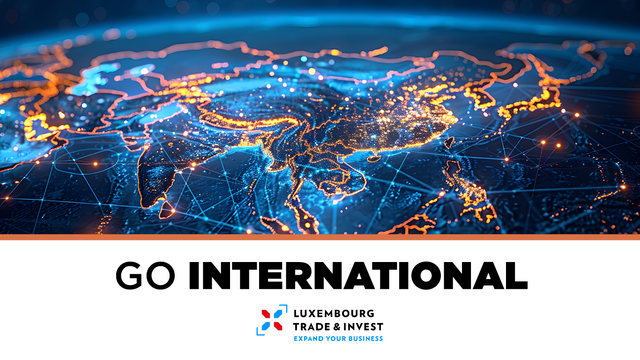
Chapters
The use of the name Crna Gora or Black Mountain (Montenegro) began in the 13th century in reference to a highland region in the Serbian province of Zeta. The later medieval state of Zeta maintained its existence until 1496 when Montenegro finally fell under Ottoman rule. Over subsequent centuries, Montenegro managed to maintain a level of autonomy within the Ottoman Empire. From the 16th to 19th centuries, Montenegro was a theocracy ruled by a series of bishop princes; in 1852, it transformed into a secular principality. Montenegro was recognized as an independent sovereign principality at the Congress of Berlin in 1878. After World War I, during which Montenegro fought on the side of the Allies, Montenegro was absorbed by the Kingdom of Serbs, Croats, and Slovenes, which became the Kingdom of Yugoslavia in 1929. At the conclusion of World War II, it became a constituent republic of the Socialist Federal Republic of Yugoslavia. When the latter dissolved in 1992, Montenegro joined with Serbia, creating the Federal Republic of Yugoslavia and, after 2003, shifting to a looser State Union of Serbia and Montenegro. In May 2006, Montenegro invoked its right under the Constitutional Charter of Serbia and Montenegro to hold a referendum on independence from the two-state union. The vote for severing ties with Serbia barely exceeded 55% - the threshold set by the EU - allowing Montenegro to formally restore its independence on 3 June 2006. In 2017, Montenegro joined NATO and is currently completing its EU accession process, having officially applied to join the EU in December 2008.
Key indicators
- Area
- 13,812 km2
- Population
- 607,414 (July 2021 est.)
- Government type
- parliamentary republic
- Languages
- Serbian 42.9%, Montenegrin (official) 37%, Bosnian 5.3%, Albanian 5.3%, Serbo-Croat 2%, other 3.5%, unspecified 4% (2011 est.)
- GDP
- $4.779 billion (2020 est.)
- Growth rate
- 15.1% (2020 est.)
- HDI
- 48
- Capital
- Podgorica
Macroeconomic indicators
Montenegro's economy is transitioning to a market system. Around 90% of Montenegrin state-owned companies have been privatized, including 100% of banking, telecommunications, and oil distribution. Tourism, which accounts for more than 20% of Montenegro’s GDP, brings in three times as many visitors as Montenegro’s total population every year. Several new luxury tourism complexes are in various stages of development along the coast, and a number are being offered in connection with nearby boating and yachting facilities. In addition to tourism, energy and agriculture are considered two distinct pillars of the economy. Only 20% of Montenegro’s hydropower potential is utilized. Montenegro plans to become a net energy exporter, and the construction of an underwater cable to Italy, which will be completed by the end of 2018, will help meet its goal.
Montenegro uses the euro as its domestic currency, though it is not an official member of the euro zone. In January 2007, Montenegro joined the World Bank and IMF, and in December 2011, the WTO. Montenegro began negotiations to join the EU in 2012, having met the conditions set down by the European Council, which called on Montenegro to take steps to fight corruption and organized crime.
The government recognizes the need to remove impediments in order to remain competitive and open the economy to foreign investors. Net foreign direct investment in 2017 reached $848 million and investment per capita is one of the highest in Europe, due to a low corporate tax rate. The biggest foreign investors in Montenegro in 2017 were Norway, Russia, Italy, Azerbaijan and Hungary.
Montenegro is currently planning major overhauls of its road and rail networks, and possible expansions of its air transportation system. In 2014, the Government of Montenegro selected two Chinese companies to construct a 41 km-long section of the country’s highway system, which will become part of China’s Belt and Road Initiative. Cheaper borrowing costs have stimulated Montenegro’s growing debt, which currently sits at 65.9% of GDP, with a forecast, absent fiscal consolidation, to increase to 80% once the repayment to China’s Ex/Im Bank of a €800 million highway loan begins in 2019. Montenegro first instituted a value-added tax (VAT) in April 2003, and introduced differentiated VAT rates of 17% and 7% (for tourism) in January 2006. The Montenegrin Government increased the non-tourism Value Added Tax (VAT) rate to 21% as of January 2018, with the goal of reducing its public debt.
Source: Ministry of Foreign Affairs of Luxembourg
IMF Statistics:
| Subject descriptor | 2023 | 2024 | 2025 | 2026 | 2027 |
|---|---|---|---|---|---|
|
All Items, Consumer price index (CPI), Period average, percent change Percent (Units) |
8.585 |
3.335 |
4.063 |
2.287 |
2.341 |
|
Current account balance (credit less debit), Percent of GDP Percent (Units) |
-11.194 |
-17.091 |
-18.13 |
-17.477 |
-16.981 |
|
Current account balance (credit less debit), US dollar US dollar (Billions) |
-0.856 |
-1.414 |
-1.696 |
-1.788 |
-1.826 |
|
Exports of goods and services, Volume, Free on board (FOB), Percent change Percent (Units) |
8.329 |
-6.276 |
-1.289 |
3.068 |
1.363 |
|
Gross domestic product (GDP), Constant prices, Percent change Percent (Units) |
6.478 |
3.164 |
3.2 |
3.2 |
3.0 |
|
Gross domestic product (GDP), Current prices, Per capita, US dollar US dollar (Units) |
12261.695 |
13259.471 |
14985.897 |
16380.285 |
17210.869 |
|
Gross domestic product (GDP), Current prices, US dollar US dollar (Billions) |
7.646 |
8.272 |
9.353 |
10.229 |
10.753 |
|
Imports of goods and services, Volume, Cost insurance freight (CIF), Percent change Percent (Units) |
6.681 |
4.532 |
7.722 |
3.307 |
1.532 |
Source: IMF Statistics - Montenegro
Relationships with Luxembourg
Existing conventions and agreements
Non double taxation agreement
In order to promote international economic and financial relations in the interest of the Grand Duchy of Luxembourg, the Luxembourg government negotiates bilateral agreements for the avoidance of double taxation and prevent fiscal evasion with respect to Taxes on Income and on fortune with third countries.
None
Air Services agreement
None
Further information
Foreign Trade
The Statec Foreign Trade statistics provide information on the trade of goods - by product and by country. This information is collected respectively through the INTRASTAT declaration and on the basis of customs documents.
You can see the statistics on the website of the Statec.
Contact points in Montenegro
Embassy of the Grand Duchy of Luxembourg in Montenegro
Ambassador with residence in Luxembourg: Mr Philippe DONCKEL
Ministry of Foreign Affairs
9, rue du Palais de Justice
L-1841 Luxembourg
Tel.: (+352) 247-72393
E-Mail: podgorica.amb@mae.etat.lu
Source: Ministry of Foreign Affairs of Luxembourg
Country risk as defined by Office du Ducroire for Montenegro
Ducroire is the only credit insurer covering open account deals in over 200 countries. A rating on a scale from 1 to 7 shows the intensity of the political risk. Category 1 comprises countries with the lowest political risk and category 7 countries with the highest. Macroeconomics experts also assess the repayment climate for all buyers in a country.
Link: Ducroire Office - Country Risk for Montenegro
Other useful links
- CIA World factbook on Montenegro
- Doing Business in Montenegro
- Economic Freedom Index - Montenegro
- Das ist Montenegro
- Présentation du Monténégro par trésor



